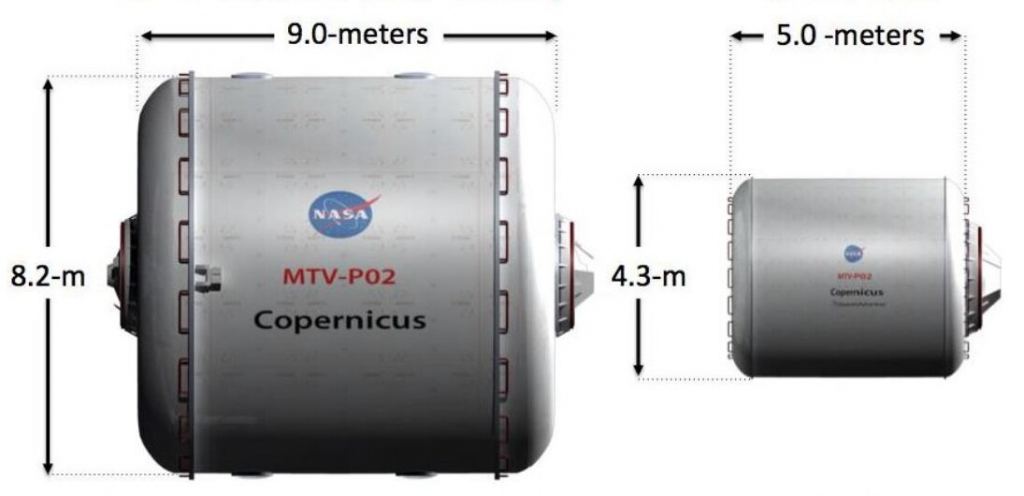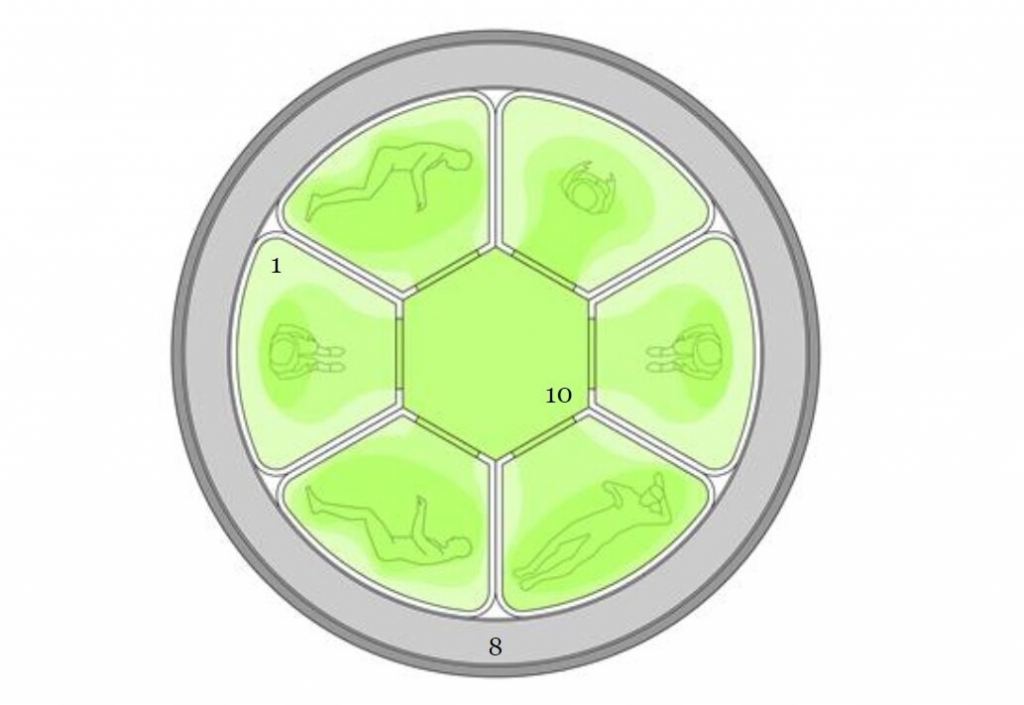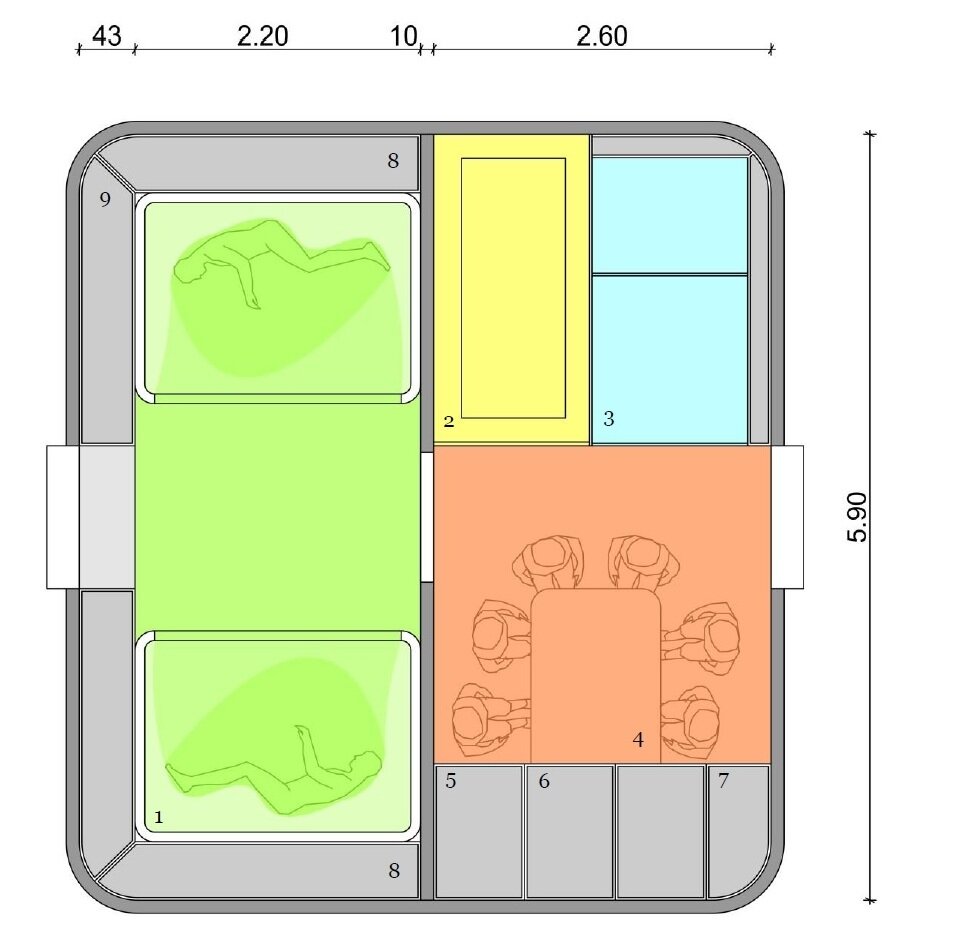There’s a disturbing lack of hibernation in our space-faring plans. In movies and books, astronauts pop in and out of hibernation—or stasis, or cryogenic sleep, or suspended animation, or something like it—on a regular basis. If we ever figure out some kind of hibernation, can we take advantage of it to get by with smaller spacecraft?
The European Space Agency (ESA) is working to answer that question.
The ESA has what they call a “topic team” working on human hibernation. The topic team is working under the umbrella of the Advanced Concepts Team, which studies ideas and technologies that are of long-term significance to the ESA’s space-faring endeavours. It’s like a think tank that supports multidisciplinary research.
If we want a future where crewed missions to other planets—or possibly other solar systems—is a reality, then human hibernation will be a part of it. Either that, or a multi-generational star-ship, with all its resource-hungry parameters.
The ESA says they’ve “identified the controlled use of torpor & hibernation as a game-changing technology for human spaceflight.” They also speculate that lowering the metabolic rate of astronauts on long space journeys could not only conserve air, water, and food, but also lower their susceptibility to radiation damage.
The ESA is using their Concurrent Design Facility (CDF), a multimedia facility that allows their different teams to work together, to examine human hibernation for a trip to a nearby planet, likely Mars. The team members took stock of current space travel technology for a five-year Mars mission that sends six astronauts to the red planet and back. This is the first time they’ve studied the impact that hibernation could have on mission design.
“We worked on adjusting the architecture of the spacecraft, its logistics, protection against radiation, power consumption and overall mission design,” comments Robin Biesbroek of the CDF.
There’s a lot to think about. Various sci-fi movies and books have explored human hibernation, so most of us can name many of the issues. What psychological effects will there be? It would surely be shocking to hibernate for a week, a month, a year, even longer, and then to awaken somewhere out in space. How could a human being possibly prepare for that?
And what about safety? Sci-fi is littered with people who woke up too early, or too late, from hibernation. Weak and puking, or maybe covered in a cold sweat, many a protagonist has awakened at the wrong time, and found their life turned upside down by a malfunctioning hibernation system.
But first things first.
How would hibernation technology, if we could develop it, affect spaceship design?
“We looked at how an astronaut team could be best put into hibernation, what to do in case of emergencies, how to handle human safety and even what impact hibernation would have on the psychology of the team. Finally we created an initial sketch of the habitat architecture and created a roadmap to achieve a validated approach to hibernate humans to Mars within 20 years,” said Biesbroek.
Probably the first thing to notice is the size of habitation modules. A hibernating crew could utilize a much smaller hab module than an awake crew, as this image illustrates.

The preliminary study showed that the mass of the spacecraft could be reduced by one third. The crew would hibernate in small pods that would double as cabins for the crew while awake. The removal of consumables would help by eliminating several tons of mass.

The study looked at a 180 day cruise to Mars. The astronauts would have to put on extra body fat prior to the mission, and a drug would induce their hibernation, or torpor. They would hibernate inside their darkened, cooled pods, and when they awakened there would be a 21 day recuperation period.
One of the most well-known hazards facing astronauts on long spaceflights is radiation. High-energy particles abound in space, and protecting the crew is a primary concern. But because crew-members would be hibernating in one spot, it makes it easier to design protection. Shielding, such as water containers, could be built around the pods.

The basic assumption behind human hibernation in space is built around animal hibernation. There are two types of hibernators in the animal kingdom: obligate hibernators that hibernate annually no matter the temperature or conditions; and facultative hibernators that hibernate as a response to stressors in the environment. Many types of animals hibernate, including bears, marsupials, bats, some rodents and some squirrels.
“For a while now hibernation has been proposed as a game-changing tool for human space travel,” explains SciSpacE Team Leader Jennifer Ngo-Anh. “If we were able to reduce an astronaut’s basic metabolic rate by 75% – similar to what we can observe in nature with large hibernating animals such as certain bears – we could end up with substantial mass and cost savings, making long-duration exploration missions more feasible.”
That’s still a big if, though. Bear hibernation is still somewhat mysterious. They recycle their proteins and their urine while hibernating. And they can hibernate for up to 7 months without losing bone mass. Other hibernating animals interrupt their torpor with periods of more typical temperature and heart rate called euthermic arousals. How all this would be managed in humans, a species that does not naturally hibernate, is unknown.
There’s some premise for human hibernation though, and that comes from modern medicine.
“And the basic idea of putting astronauts into long-duration hibernation is actually not so crazy: a broadly comparable method has been tested and applied as therapy in critical care trauma patients and those due to undergo major surgeries for more than two decades,” said Ngo-Anh. “Most major medical centres have protocols for inducing hypothermia in patients to reduce their metabolism to basically gain time, keeping patients in a better shape than they otherwise would be.”
So researchers aren’t starting from scratch. They at least have a starting point, which is what these types of think tanks are all about.
“We aim to build on this in future, by researching the brain pathways that are activated or blocked during initiation of hibernation, starting with animals and proceeding to people,” Ngo-Anh concluded.
More:
- Press Release: Hibernating astronauts would need smaller spacecraft
- ESA: Advanced Concepts Team; Bioengineering: Hibernation
- JSTOR Daily: The Mysteries of Hibernation

